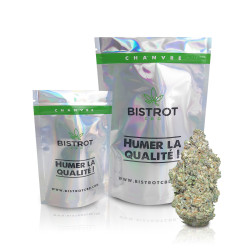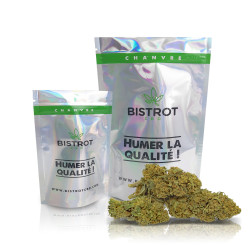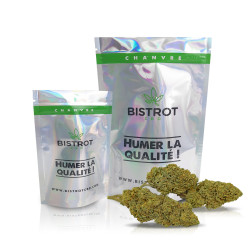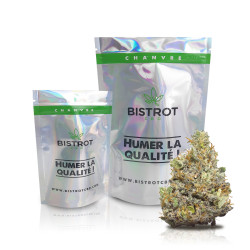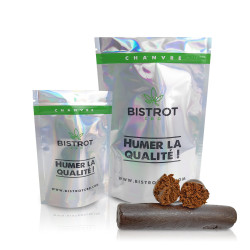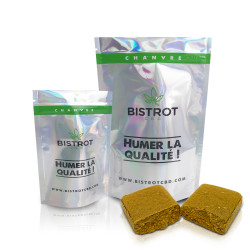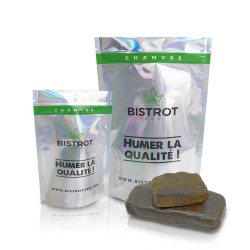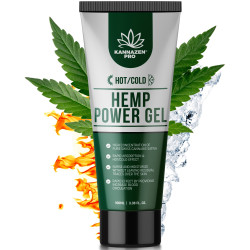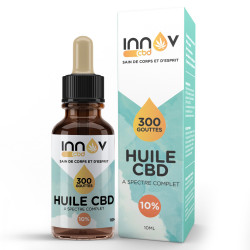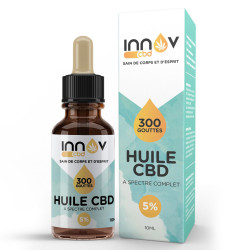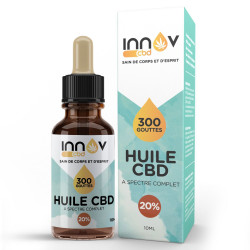
Cannabis is a plant used since the dawn of time. It provides both physical and cerebral effects. In addition, its fibers possess an incredible richness and robustness (industry). In many countries (China, Egypt, India, …), cannabis was traditionally used during religious ceremonies or rituals. It allowed to open the doors of perception (hallucination), to heal (shaman), to cure pain (CBD) or to have access to the unconscious (psyche). Today in the world, it is widely consumed for its hedonic recreational effects high or euphoric. In France, it is these psychoactive effects which were worth to him the classification like narcotic. Therefore, its use and exploitation are illegal.
Since 2018, it is not uncommon to find online shops or physical stores legally selling products (vegetable oils, seeds, flowers, liquids, hemp oil capsules, …) containing CBD. (cannabidiol). This cannabis compound is not prohibited. Indeed, unlike THC (tetrahydrocannabinol), it does not cause psychotropic effects. Indeed, no trace of this molecule appears in article 2 of the decree of February 22, 1990 fixing the list of the substances classified as narcotics (1). The interest in these CBD products is growing every day. It is then pertinent to ask the question:
- If CBD does not produce euphoria or highs for its users, what are the benefits it provides to create such a craze?
The numerous testimonies praising its analgesic and relaxing action could be the key to this success! And if CBD had real anti-pain virtues?
Some definitions around cannabis
In order to get to the heart of the matter concerning the links between CBD and pain, a few definitions may be necessary to better understand what follows:
- THC (tetrahydrocannabinol): cannabinoid specific to cannabis. Its psychotropic properties place it on the list of substances classified as narcotics of article 2 of the decree of February 22, 1990 (1). In France, it is forbidden to possess, market and consume a product with a THC level equal to or higher than 0.2%.
- CBD (cannabidiol): cannabinoid specific to cannabis. It would have therapeutic properties such as anti pain, anti inflammatory, anxiolytic, anti stress. But, it is particularly appreciated for the muscular relaxation and the feeling of relaxation which it causes.
- The endocannabinoid system (ECS): the ECS is a communication system that helps the body find its homeostasis. That is to say that it allows to maintain the internal balance whatever the external constraints (glycemia, body temperature, blood pressure, …). It consists of: – specific membrane receptors (CB1 and CB2) found in the nervous system as well as in peripheral organs, – endogenous ligands (specific to the body) called endocannabinoids – enzymes (proteins that induce or stimulate a chemical reaction) responsible for the synthesis and degradation of these molecules (2).
Cannabinoids specific to hemp such as THC and CBD act more or less directly on the SEC. This explains the induction of effects (psychotropic for THC and relaxing for CBD) after absorption.
Cannabis CBD
also called light or legal cannabis or industrial hemp. It defines the varieties of cannabis authorized for exploitation in France (3) and found in legal CBD products.
Definitions around pain and CBD
- Cytokines: hormones synthesized by the immune system in response to various stimuli. These molecules play a messenger role. Indeed, they allow the transmission of information from cell to cell. There are 3 types: Pro-inflammatory cytokines, immunoregulatory cytokines and effector cytokines.
- Chronic pain: Pain is considered chronic (as opposed to acute) when the duration or recurrence of the pain goes beyond what is usually observed for a potentially identical cause. It is characterized by an inadequate response to the treatment administered. It is often accompanied by a significant and progressive deterioration, due to pain, of the patient’s functional and social abilities in daily activities.
- Arthritis: acute or chronic inflammation of the joints. It generates a more or less bearable pain that can lead to a real limitation of movements if it is too strong. Current treatments administered to patients with severe arthritis are not without insignificant side effects, although they often interfere with the pro-inflammatory cytokines involved in arthritis.
- Multiple sclerosis: an inflammatory, autoimmune and degenerative disease of the brain and spinal cord. The nervous system disorder of a patient with multiple sclerosis induces stress, severe pain and muscle spasms. Few medical treatments are effective in relieving these symptoms.
CBD as an anti chronic pain
Chronic pain, by its nature and persistence, often requires a multi-drug approach to pain management. However, if a treatment relieves and/or treats a patient, taking simultaneous of medications can cause side effects. These can sometimes be as disabling as the reason for taking them. In January 2017, the U.S. National Academy of Sciences, Engineering and Medicine released a report on the therapeutic applications of cannabis. Significant evidence is reported on the efficacy of medical hemp in the treatment of chronic pain in adults (4). In 2006, a scientific study was published in the journal Annals of Pharmacotherapy. It focuses on the use of cannabinoids (CBD, THC, CBN, …) as analgesics and concludes that :
- “Chronic pain often requires a polypharmaceutical approach to management, and cannabinoids are a potential addition to the arsenal of treatment options” (5).
Indeed, this natural alternative is particularly interesting since CBD has no psychotropic side effects. However, it is preferable to consult a doctor before taking any self-medication. This will avoid any unwanted molecular interactions.
CBD as a painkiller and anti-inflammatory
Today, the European market offers a large number of CBD products:
hemp oils
,
dried flowers
,- Cannabis seed oil capsules,
- and other cannabidiol derivatives (cream, candy, resins…)
Scientific studies and research on the alleged beneficial properties of CBD revealed by its consumers are multiplying. However, there are still doubts about the therapeutic effectiveness of CBD. This is mainly because its mode of operation on the SEC is not yet fully understood. On the other hand, most studies testing the efficacy of the cannabidiol molecule in relieving pain and inflammation almost all tend towards the same conclusion:
- CBD is soothing!
This was found in particular in a 2016 study in the European Journal of Pain (6). This study uses rats suffering from arthritis following an injection of adjuvants and on which was applied for 4 days, a topical gel (to optimize the bioavailability of CBD by the body) containing CBD. Following these tests, a significant decrease in inflammation and pain symptoms was observed. Moreover, no side effects are noticeable.
The advice of CBD to relieve osteoarthritis
The CBD appears therefore as an interesting ally to relieve the evils caused by arthritis. However, further studies, including human studies, are needed to confirm these results.
To optimize the effects (faster and more powerful) of CBD, modes of absorption to be privileged are :
- CBD oil by sublingual application
- inhalation of dried cannabis flowers by vaporization
Multiple Sclerosis and CBD
Cannabis users as a chronic painkiller or for acute arthritis pain testify to the benefits therapeutic. In 2016, Canadian study reveals these qualities in patients with multiple sclerosis (6). Indeed, on the 225 patients in the behavioral study regarding hemp as a drug treatment:
- 50.2% would be willing to try again if medical cannabis became legal (which is the case today in Canada).
The study only looks at patients’ attitudes toward accepting a cannabis-based medication. It does not take into account the clinically proven effectiveness of relief from the effects of cannabinoids. However, it can be deduced from the findings that they benefited from this consumption:
- “Cannabis is widely accepted within the MS patient community. One in 5 people currently use the drug for reasons that differ between neuropsychiatry and neurology clinics. Use could potentially more than double if the drug were legalized.”
Buy a CBD pain reliever
With the popularization of CBD in recent years, the range of legal cannabis products has become very diverse:
- cannabidiol balm,
- vegetable oils of hemp,
- dried flowers and leaves,
- light cannabis resin,
- capsules and seed oil capsules,
- CBD concentrated candies
- liquids for electronic cigarette..
Each product meets the needs of a specific type of absorption and, therefore, the expectations of heterogeneous consumers. Even so, CBD oil and quality cannabis flowers remain the most powerful painkillers. Indeed, their nature allows modes of absorption that optimize the bioavailability (power, quality and speed of effects) of the molecule. Indeed, this type of consumption does not undergo digestion (sublingual for the oil and by vaporization for the flowers).
Like any consumable (food, beverages, …), before buying a CBD product as an anti-pain, it is important to choose the products well:
- impeccable quality (organic or sustainable agriculture)
- traceability
Thus, the consumer gets the best benefits of CBD without the deleterious effects of a questionable composition. Also, before any purchase of CBD anti painwe recommend the consultation ofa doctor. Especially if you are already undergoing treatment and this, to avoid any interference of molecules.
FAQ: Pain and CBD
[sp_easyaccordion id=”10456″]
References:
- Order of February 22, 1990 establishing the list of substances classified as narcotics: https: //www.legifrance.gouv.fr/loda/id/JORFTEXT000000533085/2020-10-09/
- Endocannabinoids, related compounds and their metabolic routes. Fezza, F., Bari, M., Florio, R., Talamonti, E., Feole, M., and Maccarrone, M. Published in October 2014 in the journal Molecules: https://pubmed.ncbi.nlm.nih.gov/25347455/
- Order of August 22, 1990 implementing Article R. 5132-86 of the Public Health Code for cannabis: https://www.legifrance.gouv.fr/loda/id/JORFTEXT000000351447/2020-10-09/
- The health effects of cannabis and cannabinoids. The current state of evidence and recommendations for research, January 2017. Consensus Study Report of the U.S. National Academy of Sciences, Engineering and Medicine: https://www.nap.edu/catalog/24625/the-health-effects-of-cannabis-and-cannabinoids-the-current-state
- Cannabinoid Analgesia as a Potential New Therapeutic Option in the Treatment of Chronic Pain. Tammy L Burns PharmD, Joseph R Ineck, PharmD. First Published February 1, 2006 in the journal Annals of Pharmacotherapy: https://pubmed.ncbi.nlm.nih.gov/16449552/
- Transdermal cannabidiol reduces inflammation and pain-related behaviors in a rat model of arthritis, D.C. Hammell, L.P. Zhang, […], and K.N. Westlund, published 2016 in the European journal of pain: https://www.ncbi.nlm.nih.gov/pmc/articles/PMC4851925/?report=reader
- Cannabis attitudes and use patterns among Canadians with multiple sclerosis, Emma Banwell, Bennis Pavisian, Liesly Lee, Anthony Feinstein, 2016: https://pubmed.ncbi.nlm.nih.gov/27919478/
